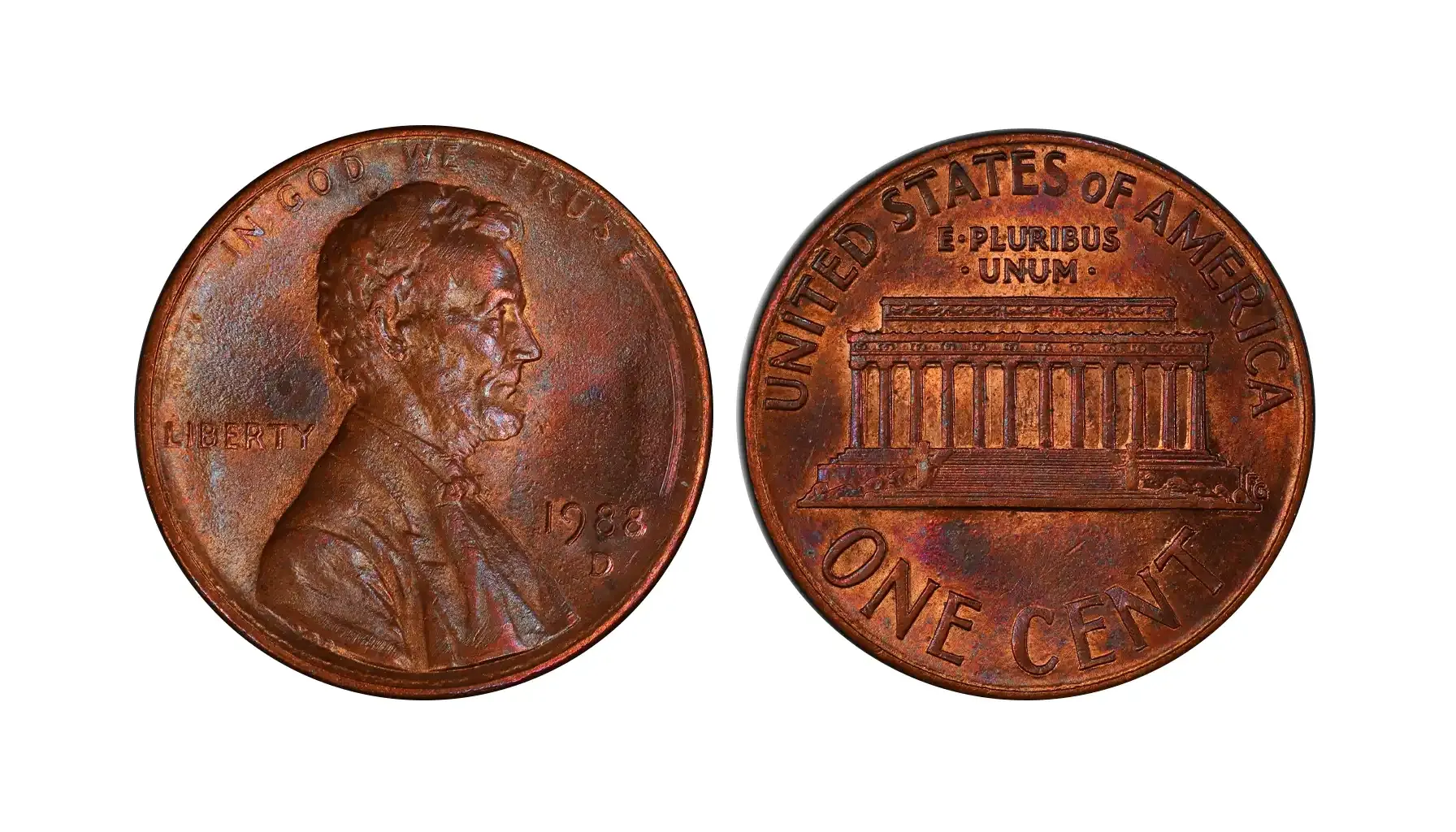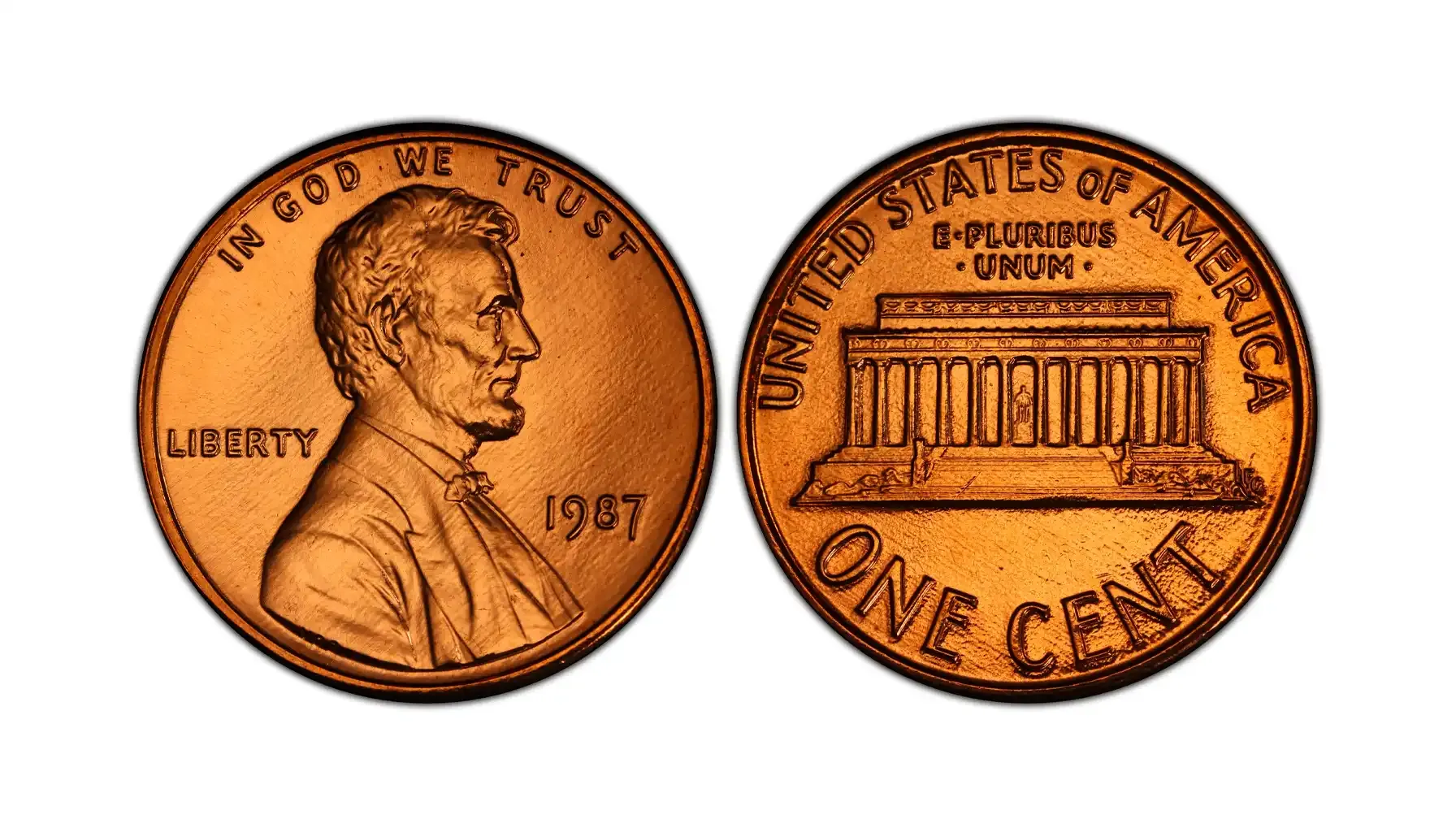Contents:
- The History and Design of the Mercury Dime
- Is a 1941 Dime Worth Anything: The Intrinsic 1941 Liberty Dime Value
- Mint Locations and 1941 Production Breakdown
- Pricing Guide: How Much Is a 1941 Dime Worth
- Why Full Bands (FB) Matter So Much
- How to Authenticate and Identify How Much Is a 1941 Silver Dime Worth
- Should You Get Your Coin Graded?
In the world of American numismatics, the 1941 US dime stands out as a symbol of artistic elegance and historical depth. The 1941 mint, in particular, continues to fascinate collectors and silver investors alike. Not only is it a beautiful piece of coinage history, but it also contains real silver 1941 silver dime value and has key collectible features that can make some examples significantly more valuable than others.
Whether you’ve found one in your coin jar or inherited a few from a relative, understanding what makes the 1941 dime value today goes beyond just its age. In this article, we’ll walk you through the coin’s design origins, silver composition, mint locations, and other factors to check coin value reliably.
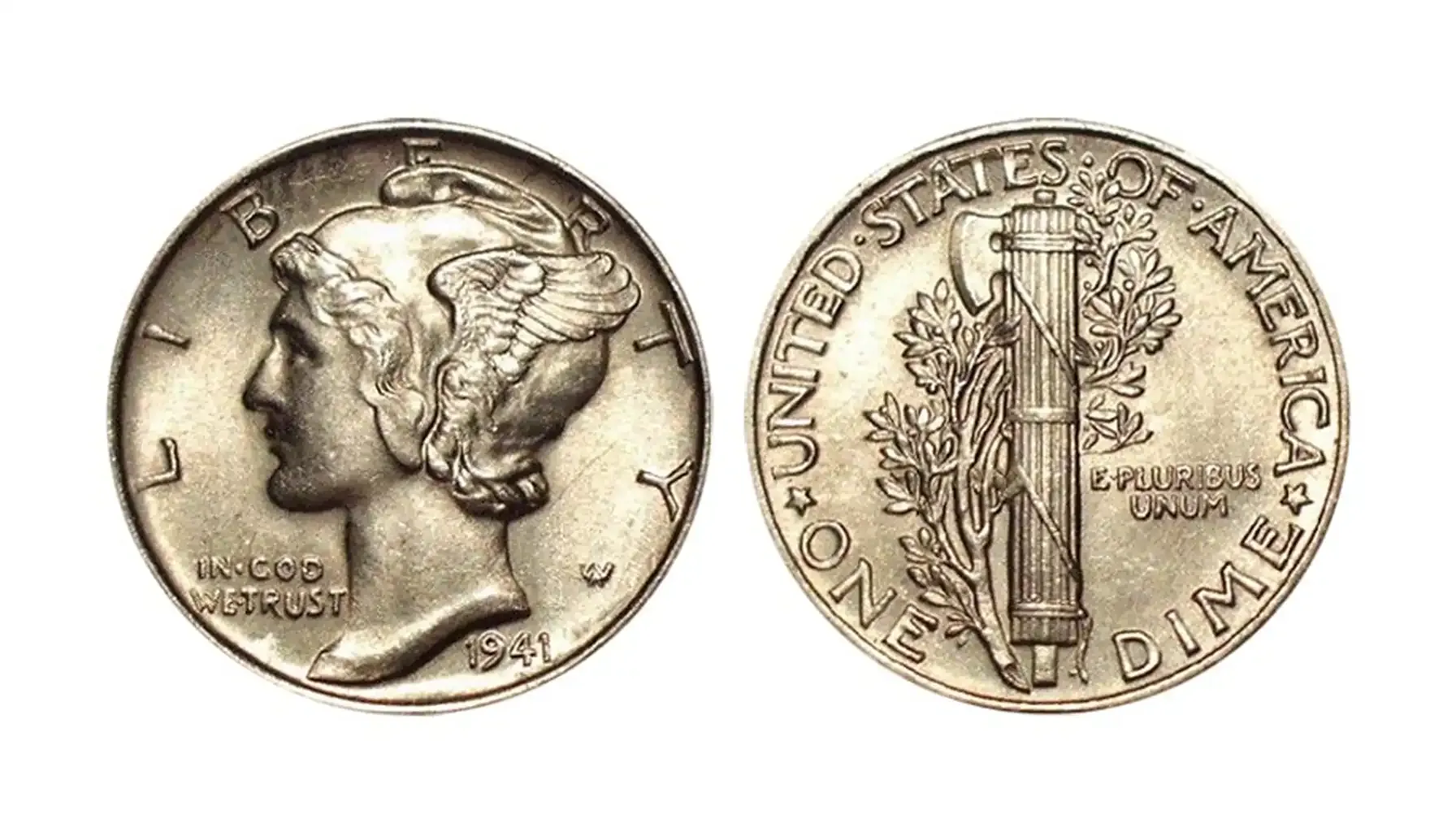
The History and Design of the Mercury Dime
Before diving into the value of 1941 dime and mint marks, let’s take a moment to appreciate the artistry behind this coin. Officially known as the Winged Liberty Head Dime, it was minted from 1916 to 1945 and designed by acclaimed sculptor Adolph A. Weinman—also known for the Walking Liberty Half Dollar.
Despite its popular nickname, the coin does not actually feature the Roman god Mercury. Instead, the obverse (front) shows Liberty wearing a winged cap, meant to symbolize freedom of thought. However, the resemblance to the Roman god led to the enduring “Mercury” misnomer.
The reverse 1941 dime w mint mark design is just as symbolic. It features a fasces (a bundle of rods tied around an axe) representing strength through unity, paired with an olive branch, which stands for peace. This blend of martial and diplomatic symbols was particularly resonant during the World War II era, when unity and peace were ideals heavily promoted across the U.S.
Advice: Check out the history of dimes’ design in this guide.
Is a 1941 Dime Worth Anything: The Intrinsic 1941 Liberty Dime Value
For investors, one of the major attractions of the 1941 Mercury Dime is its silver composition. Each dime from this series was struck using a 90% silver, 10% copper alloy. Specifically, a single 1941 Mercury head dime contains 0.07234 troy ounces (2.25 grams) of pure silver
This means that even heavily worn or common-date dimes have intrinsic bullion value. At times of high silver prices, the melt value of a 1941 dime alone can exceed how much is a 1941 Mercury dime worth—making it popular among silver stackers and bullion investors as well.
For example, with silver hovering around $25 per troy ounce, the silver content in one 1941 S Mercury dime would be worth approximately $1.80 in melt Mercury dime 1941 value (as of current spot price).
That’s a strong starting point—before factoring in rarity, condition, mint mark, or collector demand.
Recommended reading: Learn more about various silver dimes worth in our article.
Mint Locations and 1941 Production Breakdown
1941 dimes were produced in large numbers in three different U.S. Mints:
Mint Location | Mint Mark | Mintage | Notable Details |
Philadelphia | (No mark) | 175,090,000 | Most common issue |
Denver | D | 45,634,000 | Scarcer than Philly coins |
San Francisco | S | 43,090,000 | Scarcer and desirable in MS |
The mint mark, if present, is located on the reverse side of the coin—to the left of the fasces’ base. Coins without a mint mark were struck in Philadelphia, which was the primary production site for most U.S. coinage during that era.
While none of the 1941 issues are considered “rare” in absolute terms, condition and strike quality can turn an ordinary metal into a standout collectible. This is where features like Full Bands and Proof strike quality begin to matter—a topic we’ll explore in detail in the next section.
Pricing Guide: How Much Is a 1941 Dime Worth
While the 1941 Mercury dime no mint mark is not considered a rare coin in circulated condition, certain factors can substantially influence its price. These include mint mark, state of preservation, strike quality, and specific die characteristics like Full Bands or errors.
Let’s break down what you can expect when valuing a 1941 dime from each mint.
General Value of 1941 Mercury Dime Ranges by Grade and Mint Mark
Here’s an overview of approximate retail values based on current market trends and collector demand:
Grade | 1941 (No Mark) | 1941-D | 1941-S |
Good (G-4) | $2–$3 | $2–$3 | $2–$3 |
Fine (F-12) | $3–$4 | $3–$4 | $3–$4 |
Extremely Fine | $4–$6 | $4–$6 | $4–$6 |
Uncirculated | $7–$15 | $7–$15 | $7–$15 |
Full Bands (MS) | $20–$100+ | $25–$150+ | $30–$200+ |
Note: These 1941 dime no mint mark value examples are estimates. Final prices depend on visual appeal, strike sharpness, luster, and demand at auction or from dealers. Check other dimes’ values from different years in another article.
Why Full Bands (FB) Matter So Much
For a liberty dime 1941, the “Full Bands” designation is one of the most important and price-boosting attributes. On the reverse side of the coin, look at the fasces — the vertical bundle of rods. It is crisscrossed with three horizontal bands. When all of these bands are fully separated and sharply struck, the coin is labeled as Full Bands (FB) by major grading services like PCGS or NGC.
Here’s what makes FB coins special:
They indicate excellent strike quality, which was uncommon during mass production.
Collectors of 1941 D Mercury dime value them as the highest standard of minting for the series.
They often fetch 2x to 10x more than standard Mint State coins.
For example:
A 1941-S in MS66 (non-FB) might sell for $40–$50.
A 1941-S MS66 FB can command $300–$500+, especially at major auctions.
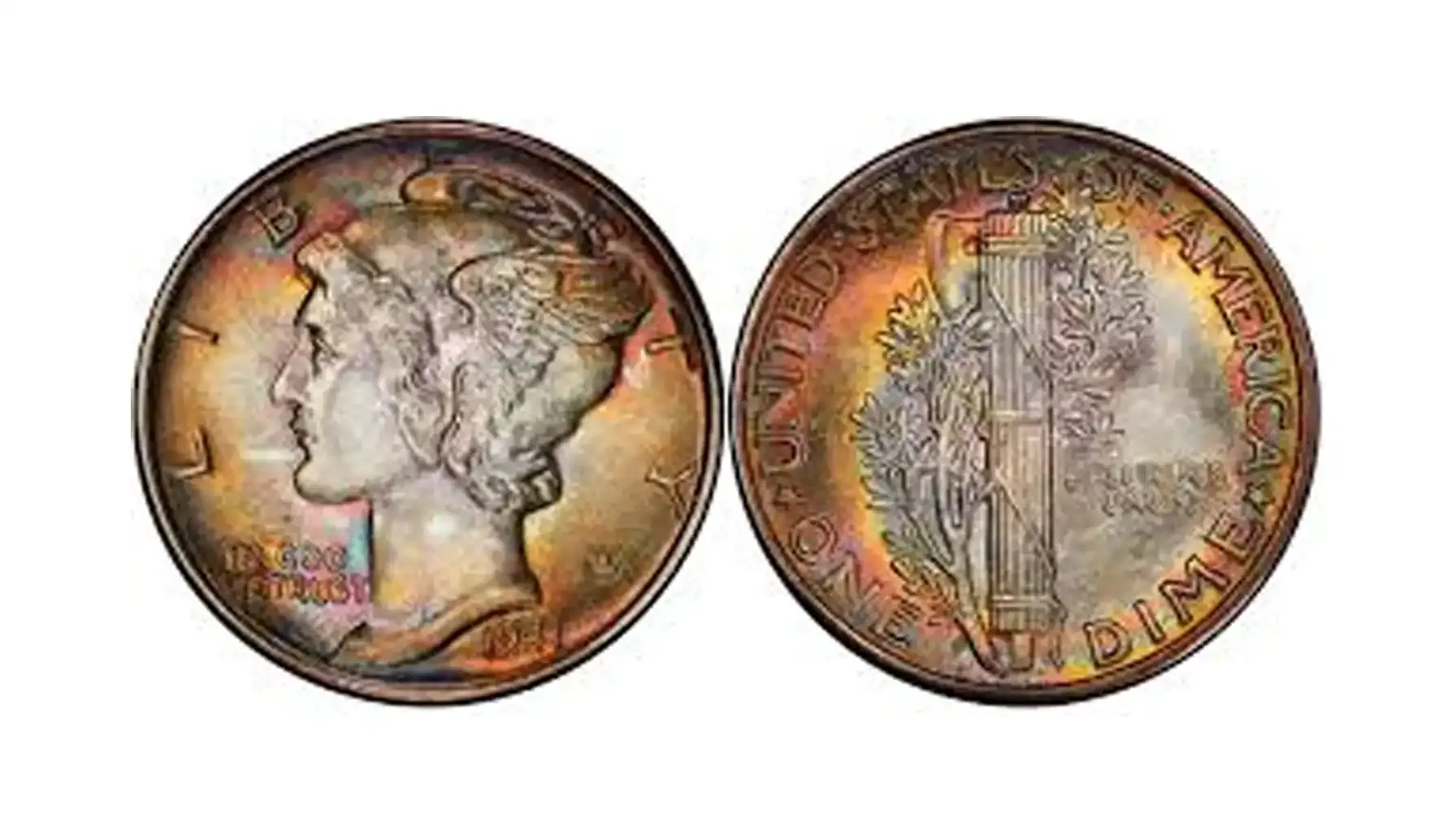
Proof Mercury Dimes from 1941
In addition to regular circulation strikes, the Philadelphia Mint also produced Proof Mercury Dimes in 1941—just 16,557 coins in total. These coins were specially made for collectors using polished dies and planchets, resulting in mirror-like fields and frosty design elements.
Proof 1941 Mercury Dime Facts:
Minted in Philadelphia only (no mint mark)
Valued between $125–$450+ depending on grade and eye appeal
Top-graded PR67 or PR68 examples can exceed $1,000 at auction
“Cameo” or “Deep Cameo” contrast brings even higher premiums
If you suspect your coin is a Proof, look for deep reflectivity, squared rims, and a very sharp strike. Professional grading is highly recommended.
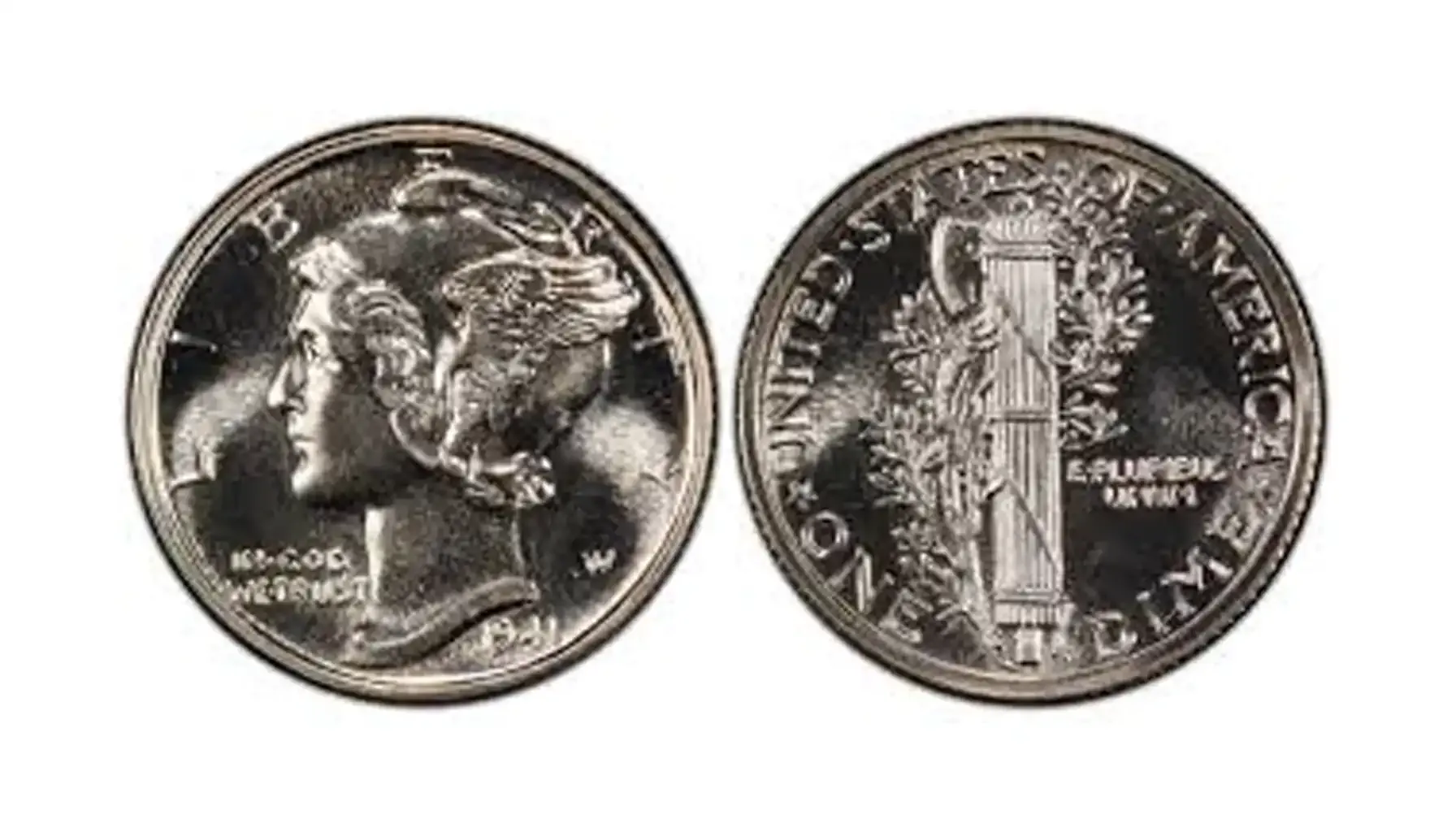
1941 Dime Error Coins and Varieties
Errors and die varieties are exactly what makes a 1941 dime rare. Although 1941 isn’t famous for a long list of high-value 1941 Mercury dime error types, there are a few that can elevate how much is a 1941 liberty dime worth:
Common and Notable 1941 Mercury Dime Errors:
Doubled Die Obverse (DDO) – Slight doubling in the date or “LIBERTY.” Rare and desirable.
Repunched Mint Mark (RPM) – Especially seen on 1941-D or 1941-S; look for secondary impressions of the mint mark under magnification.
Off-Center Strike – Portions of the design missing; more dramatic misalignments yield higher values.
Clipped Planchet – Part of the coin appears “cut off” due to an error in the blank cutting process.

Most minor errors sell for $10–$50, while dramatic RPMs or doubled dies can reach $100+, depending on severity and eye appeal.
Advised reading: In addition to dimes you can explore US half dimes and their prices in different years.
How to Authenticate and Identify How Much Is a 1941 Silver Dime Worth
If you suspect that your 1941 Mercury dime w mint mark might be worth more than just its silver content, you’ll want to go through a careful identification and evaluation process. Here’s a step-by-step breakdown to help you assess your coin’s authenticity, mint origin, grade, and potential 1941 w dime value.
1. Check the Date and Mint Mark
Turn the coin over to view the reverse (back side).
Look at the lower left area, next to the base of the fasces.
You may see:
No mint mark – Philadelphia Mint
D – Denver Mint
S – San Francisco Mint
Keep in mind:
The Philadelphia version is the most common.
Denver and San Francisco coins may hold more value in high grades or with Full Bands.
2. Inspect the Condition
Coin grading is essential to understanding 1941 s Mercury dime value. Even subtle wear can significantly reduce what is a 1941 dime worth. Use a 10x magnifier or jeweler’s loupe and inspect the following:
High points of wear: Look at Liberty’s cheek and the wings on her cap.
Luster and toning: Mint State coins have a natural shine, while circulated coins appear dull.
Rim clarity: Uncirculated coins have clean, raised rims without flattening.
Grading scale basics:
Good (G-4): Heavy wear, major details visible but faint.
Fine (F-12): Moderate wear, clear facial features and legends.
Extremely Fine (EF-40 to EF-45): Light wear, most details crisp.
Mint State (MS-60 to MS-70): No signs of wear, varying degrees of luster and strike quality.
3. Look for Full Bands
This is one of the most critical factors for premium 1941 d dime value. On the fasces (reverse), focus on the three horizontal bands. Coins that display distinct, fully separated lines across all three bands are Full Bands (FB) specimens.
Quick tip:
A well-worn coin cannot be Full Bands—this designation only applies to Mint State ones.
Use a high-resolution image or submit the coin for professional grading to confirm.
4. Spot Possible Errors or Proof Features
Keep an eye out for the following:
Doubled die – Check the date and lettering for doubled images.
Repunched mint marks – Especially on “D” or “S” coins, look for layered impressions.
Off-center strikes – If the design is not properly aligned with the planchet.
Proof qualities – If your coin has deep reflectivity and squared rims but no mint mark, it could be one of the 16,557 proofs from Philadelphia.
Error coins and proofs are best authenticated by third-party grading services.
Should You Get Your Coin Graded?
If your coin appears to be Mint State, has Full Bands, or shows signs of being a proof or error variety, grading can dramatically increase its 1941 w Mercury dime value and buyer trust. Leading services include:
PCGS (Professional Coin Grading Service)
NGC (Numismatic Guaranty Company)
Benefits of grading:
Confirms authenticity
Locks in the coin’s condition grade
Increases marketability and resale value
Grading fees typically range from $30 to $100, so it's usually worth it only if your coin’s potential value is $150+.
This case may not be a rare date, but that doesn’t mean it lacks value or interest. Thanks to its timeless design, silver composition, and collectible varieties like Full Bands or Proof strikes, it remains a cornerstone of many U.S. coin collections.
If you think you have something special, let an old coin value checker guide you to a confident decision—whether you’re collecting, selling, or just exploring the rich history hidden in your pocket change.


